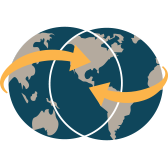The Musharraf government licensed numerous satellite broadcasters to distribute news and entertainment programming throughout the country. Programming is for the most part in Urdu and other Pakistani languages and, on more than 50 channels, ranges from news to music to Islamic commentary to self-help — for example, the women’s rights activist Mukhtar Mai has a weekly call-in show on a Siraiki-language channel in southern Punjab.
In 2007, Musharraf’s government was shaken by television coverage of the protests against the dismissal of Chief Justice Chaudhry, in March, and against the declaration of a state of emergency, in November. Television channels were pressured to discontinue live news coverage and to take some of the most widely watched talk shows off the air. On at least two occasions, the Musharraf government forced satellite uplink facilities to discontinue transmission to Pakistan.
But the media crackdown backfired. By February 2008, an International Republican Institute poll found the local media had an 88 percent approval rating in Pakistan, higher than any other institution, and 64 percent said television was the main source of information on the coming elections. In an interview in April with the GEO network talk show host Dr. Shahid Masood, PPP leader Zardari commented a little ruefully on the cable news channels’ ability to guide public opinion. “We don’t have the power to shut it down,” he said.14
Talat Hussein, executive director of news and current affairs at Aaj TV, acknowledged criticism of the television news media, saying “some in the public think we have gone overboard” on the judges issue. Muddassir Rizvi, a journalist himself who now heads the election monitoring consortium FAFEN (Free and Fair Elections Network), complained that the media have been slow to cover more nuanced issues like the composition of the electorate or the social backgrounds of the candidates. Recently, “liberal hawks” in the Pakistani media have charged the television talk shows with inflaming passions against the United States, while other critics complain that they flip-flopped during the government’s July 2007 siege of the Red Mosque.
Like American journalists, Pakistani reporters tend to cover the political horse race more than the underlying issues. “If it is not flashy, the media doesn’t cover it,” Rizvi said. But Sathar and others, including Fawzia Naqwi, of the Soros Fund, were hopeful of influencing media to monitor the government on social issues. The United States could help the electronic media address social concerns by, for example, participating in television discussion of its aid program. U.S. officials also need to appear on Pakistani talk shows to present America’s case for military action against al-Qaeda and the Taliban.
Previous: Potential Partners for Development
Next: Shared Regional Concerns
14 For the media situation in 2007, see the Committee to Protect Journalists’ Attacks on the Press in 2007, http://cpj.org/attacks07/asia07/pak07.html. For the IRI poll, see pages 22 and 35 of http://www.iri.org/mena/pakistan/pdfs/2008%20February%2011%20Survey%20of%20Pakistan%20Pu blic%20Opinion,%20January%2019-29,%202008.pdf.

